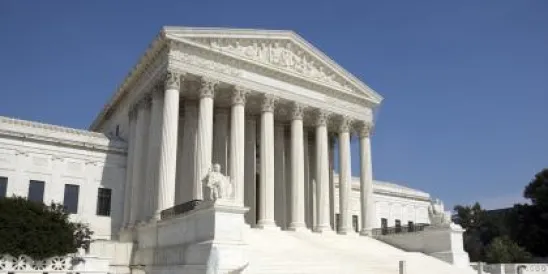In a case that has implications for every employer and respondent on each charge in which the Equal Employment Opportunity Commission (“EEOC”) finds reasonable cause to support the allegations, the U.S. Supreme Court unanimously held that courts have the authority to review whether the EEOC has satisfied its pre-suit obligation to attempt conciliation. A court’s duties, however, do not extent beyond a “relatively barebones review.” Mach Mining, LLC v. EEOC, No. 13-1019 (April 29, 2015).
The EEOC’s Duty to Conciliate
Under Title VII of the Civil Rights Act of 1964 (“Title VII”), the EEOC is obligated to investigate charges of discrimination and/or retaliation in the workplace filed by a “person claiming to be aggrieved.” The statute further states that, if the EEOC finds “reasonable cause” to believe that the allegations have merit, it must attempt to resolve the matter before filing a lawsuit on behalf of the complainant:
If the Commission determines after such investigation that there is reasonable cause to believe that the charge is true, the Commission shall endeavor to eliminate [the] alleged unlawful employment practice by informal methods of conference, conciliation, and persuasion.
The statute does not detail the extent to which the EEOC must engage in conciliation. However, the statute limits the disclosure of the participants’ communications during conciliation and gives the EEOC ultimate authority to determine whether to accept a conciliation agreement or file suit. Title VII is silent as to whether an employer (or another party) can seek judicial review of whether the EEOC satisfied its statutory obligations in pursuing these informal methods of resolution.
The Supreme Court’s Decision
In Mach Mining, the EEOC found reasonable cause to believe the complainant’s allegations that the company refused to hire her because of her sex. Thus, the EEOC sent a letter to the parties inviting them to participate in “informal methods” to resolve the claim and stating that an EEOC representative would “contact [them] to begin the conciliation process.” Approximately one year later, the EEOC sent another letter stating that “‘such conciliation efforts as are required by law have occurred and have been unsuccessful’ and that any further efforts would be ‘futile.’” The record did not reflect what, if anything, occurred between the first and second letters.
Before the district court, Mach Mining argued that the EEOC failed to conciliate in good faith before filing a lawsuit. The EEOC moved for summary judgment on that issue, arguing that the court had no authority to review conciliation efforts. But the district court denied the motion. The U.S. Court of Appeals for the Seventh Circuit reversed, concluding that the statutory directive to engage in conciliation is not subject to judicial review.
The Supreme Court granted certiorari to decide whether and how courts should review the EEOC’s informal methods of dispute resolution. The Court first concluded that Congress intended courts to have the authority to review the EEOC’s conciliation efforts. Applying the “strong presumption” favoring judicial review of administrative action, the Court determined that the federal government could not overcome that presumption with respect to the EEOC’s mandatory duty to conciliate.
Next, with regard to the scope of judicial review, the Court determined that a “limited review respects the expansive discretion that Title VII gives to the EEOC over the conciliation process, while still ensuring that the Commission follows the law.” In so holding, the Court rejected Mach Mining’s request for a “deep dive” into the conciliation process. On the other hand, the Court found that the two letters issued by the EEOC in this case—the first announcing the beginning of the process and a second concluding it—were insufficient to satisfy the conciliation obligation.
The Scope of Judicial Review
Although the Court did not issue a bright-line test for determining what efforts would satisfy the EEOC’s obligations, the Court did provide some guidance regarding the adequacy of the EEOC’s efforts and the scope of the judicial review of those efforts. To meet its obligations:
-
the EEOC “must tell the employer about the claim—essentially, what practice has harmed which person or class”; and
-
the EEOC “must provide the employer with an opportunity to discuss the matter in an effort to achieve voluntary compliance.”
Noting the importance of “flexibility” in the conciliation process, the Court emphasized the need for a “relatively barebones review.” Limiting the scope of review to only whether the EEOC actually attempted to confer with the parties and provided the information noted above, rather than expanding the review to what happened, protects both the confidentiality of the process and the EEOC’s discretion to make strategic settlement decisions. Thus, it appears that the EEOC is likely to generally survive judicial review by offering a sworn affidavit stating that it has performed its conciliation obligations but that its efforts failed.
There is, however, a significant caveat to that generally “light” review: A court must undertake fact-finding if the employer provides credible evidence—through affidavit or otherwise—“indicating that the EEOC did not provide the requisite information about the charge or attempt to engage in a discussion about conciliating the claim.” If the court finds in favor of the employer, the remedy is an order sending the case back to the EEOC for appropriate conciliation.
The decision does not clearly provide relief to employers if the EEOC makes unreasonable and inflexible demands in conciliation backed by the threat of the government’s considerable litigation resources to force employers to settle claims. Many employers, particularly smaller employers, may lack the resources for protracted litigation with the government even when they believe that they could ultimately prevail.
What Employers Should Do Now
-
Be aware of the EEOC’s obligations to conciliate, particularly in cases in which the EEOC finds reasonable cause.
-
Press the EEOC to provide reasonable information about the claim(s)—including the alleged practice(s) that is or are the subject of the claim, and, in class-type cases, the number of prospective class members and the identities of prospective class members—given that the EEOC is now answerable to a federal court regarding its conciliation obligations. Obtaining this information will allow you to better assess the value of a case and to make informed decisions about the potential benefits of early settlement versus litigation.
-
Make sure that you and your counsel document any alleged conciliation efforts (or lack thereof) so that, if necessary, you can produce evidence indicating that the EEOC failed to provide the requisite information about the charge and/or failed to attempt to engage in a conciliation discussion.





 />i
/>i
